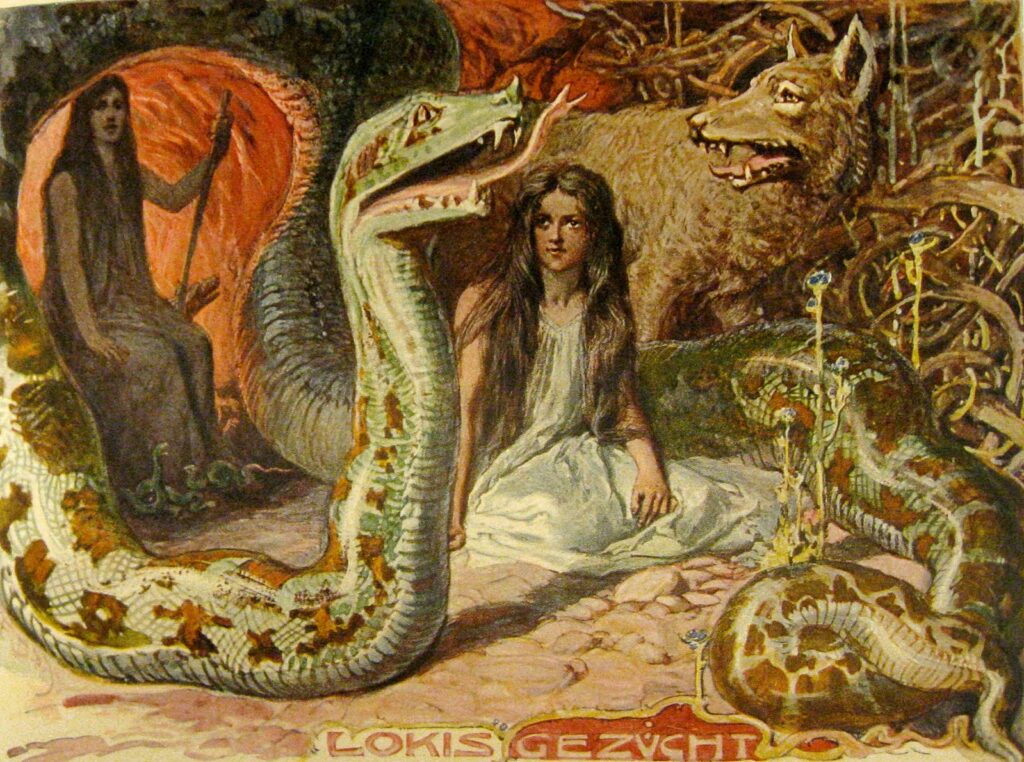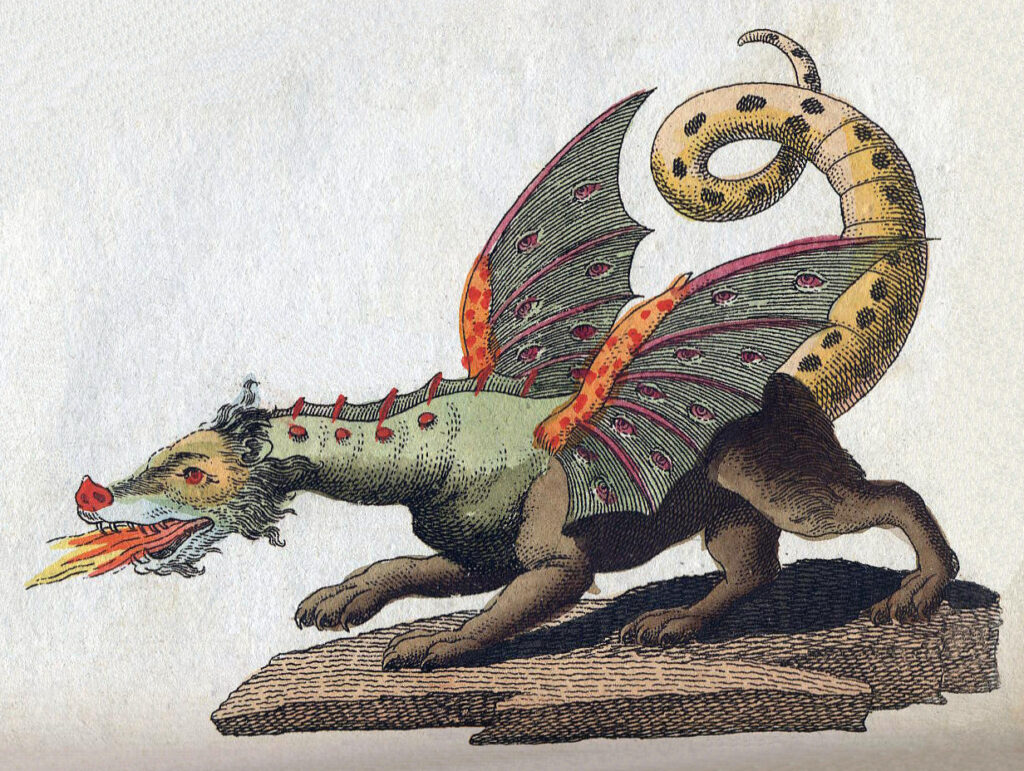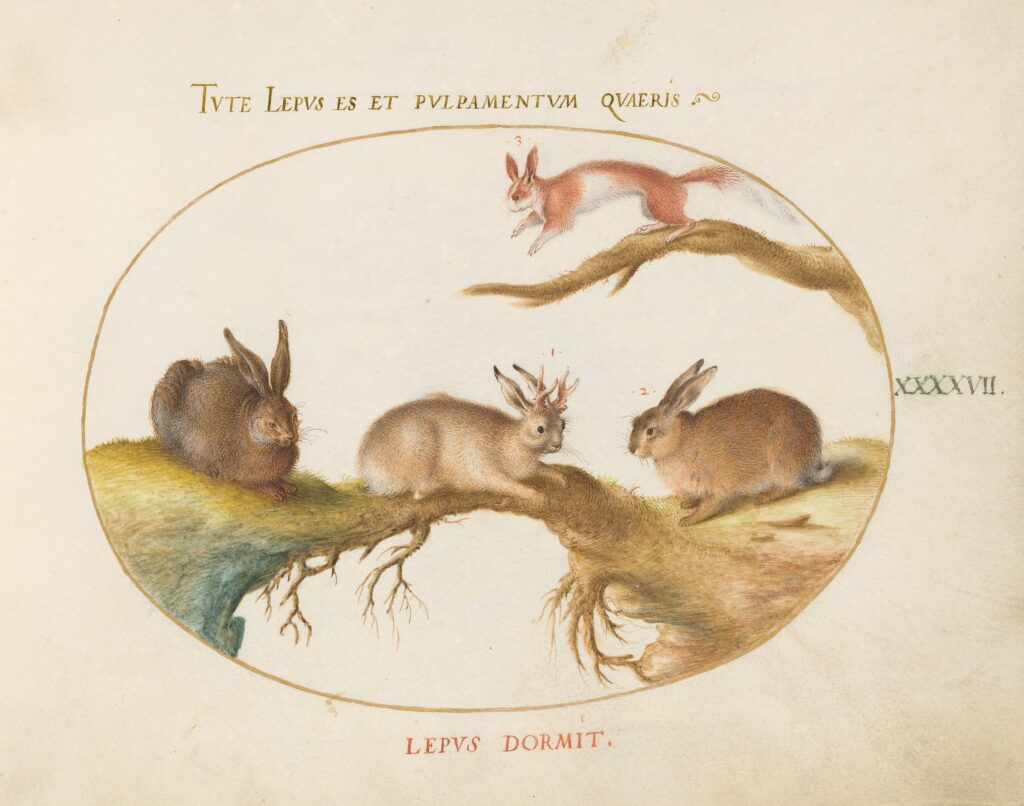Norse mythology has persisted in the Western canon for hundreds of years because of its well-crafted stories and intriguing characters, many of which have been adapted into other stories.
The World Tree, Yggdrasil, supports the universe on its branches and roots. It has been stylized throughout the ages in different cultures. Ragnarok, the prophesied end of the world in Norse mythology, is a widely recognized mythological concept.
Many of the gods of Norse mythology are still referenced in pop culture and literature today, with some even being household names. Thor and Loki have become very well known for their portrayals as characters in the Marvel Cinematic Universe and comics. And much of the pantheon of gods was explored in the recent game God of War: Ragnarok.
A recurring character in the game and an important character of note in mythology is Angrboda, a jöttun giantess of which there is little mythological record.

Norse Mythological Roots
From a historical perspective, Norse mythology is largely documented in two collections: Poetic Edda and Prose Edda.
The Poetic Edda, most famously documented in the Codex Regius, is a collection of narrative poems that document Norse mythology. Composed as a separate volume with more prose-based explanations of events, the Prose Edda is a comprehensive collection of Norse mythological stories.
Both trace their roots back to the 12th century when the poet and historian Snorri Sturluson compiled the stories into volumes to teach others mythology and the art of Norse poetry, although the stories predate Sturluson’s written copies.
The Norse Pantheon
When consulted together, these texts collectively document Norse mythology from creation to Ragnarok. They provide details for each god in the Norse pantheon.
One of the most famous is Odin, the All-Father. He was the king of Asgard and ruler of the Nine Realms. There is his son Thor, the hammer-wielding god of thunder and one of the greatest warriors in Norse mythology. And also Loki, the trickster god born of a jotun giant, and the goddess Laufey.
A lesser-known character, who is introduced in connection to Loki but becomes a key figure in her own right, is Angrboda.
Also known as the “mother of monsters” and “she-who-offers-sorrow”, Angrboda is mentioned only once in the Poetic Edda, although she gets a more robust description throughout the tales of the Prose Edda.
Mother of Monsters: Fenrir, Jormungandr, and Hel
Angrboda is documented in these texts as one of Loki’s two wives, with whom he bore three children.
Their first child was Fenrir, the great wolf who was destined to kill Odin during Ragnarok and consume the moon. Fenrir was locked away for this prophecy, but not before tricking the god Tyr into placing his hand in Fenrir’s mouth, where it was bitten clean off.
Their second child was Jormungandr, the world serpent. After he was born, Odin cast him out from Asgard where he landed in the great ocean surrounding Midgard (Earth).
As he grew, he eventually could grab his own tail and wrap around the world and form the edges of the sea, gaining the name World Serpent. However, it was prophesied that once Jormungandr released his tail then Ragnorok would begin. Notably, Jormungandr would develop a rivalry with Thor, and the two were destined to fight to the death during Ragnarok.
Their third child was Hel, a goddess that Odin banished to rule over a land called Hel, a portion of the realm of Niflheim beneath the world tree, Yggdrasil. Niflheim was the Norse equivalent of the underworld or afterlife. And Hel was responsible for looking after those who died of sickness or old age. She has become associated with death overall.
The Witch of the Ironwood
Little else is known of Angrboda, although it is believed she is “the witch of the Ironwood” mentioned in the Prose Edda.
One passage makes mention of a forest to the east of Midgard called Ironwood. This is where trollswives (Iarnvidiur) live, and where an ancient giantess breeds giants and wolves. This could be Angrboda, as she is both a giant and gave birth to at least one son with Loki who was a wolf.
The backdrop of Ironwood also is used in the game God of War: Ragnarok. It is the location where Atreus, son of the main character Kratos, meets Angrboda.
A romance buds between the two throughout the game, which is reflective of mythology because (spoiler alert) Atreus is revealed to be Loki. Although Angrboda does not give birth to their three children in the game, she nonetheless is developed as a character. Many references to her in the game allude to her scarce mythological roots.
With so little to document her existence, it is surprising that Angrboda has survived this long in Norse mythology. However, it is more surprising that there was so little documentation of her existence in the first place.
As the mother of three monsters, two of which play essential roles in Ragnarok, the end of all things, it seems she would be the perfect candidate for further exploration when elaborating on specific themes while myth-building. Perhaps her nature as a jotunn kept her from being described in more detail.
Or perhaps her lack of detail was intentional to promote an heir of mystery around Loki’s mistress and the mother of monsters.
Either way, God of War: Ragnarok has the most extensive (albeit with many creative liberties) depiction of Angrboda to date. Although maybe the MCU producers can find a way to include an easter egg referencing Angrboda as Loki explores the multiverse in the latest season of his self-titled television series.
References
“Angrboda” God of War Wiki, October 7, 2023. https://godofwar.fandom.com/wiki/Angrboda.
Pearson, Leanbh. “Angrboda: Mother of Monsters.” leanbhpearson.com, November 19, 2018. https://leanbhpearson.com/2018/11/19/angrboda-mother-of-monsters/.
Skjalden. “Angrboda is the mother of Jörmungandr, the Fenrir wolf, and Hel.” Nordic Culture, August 11, 2020. https://skjalden.com/angrboda/.
Myth and Folklore Wiki, January 14, 2023. https://mythus.fandom.com/wiki/Angrbo%C3%B0a.

